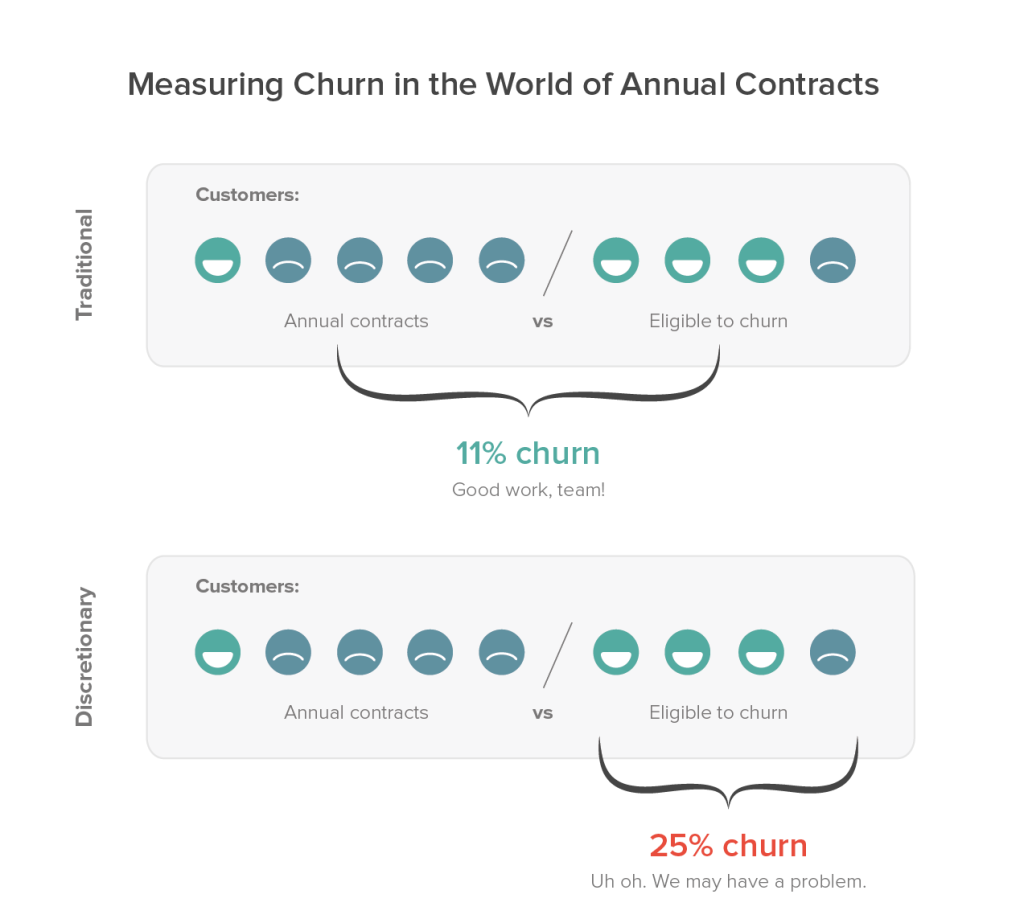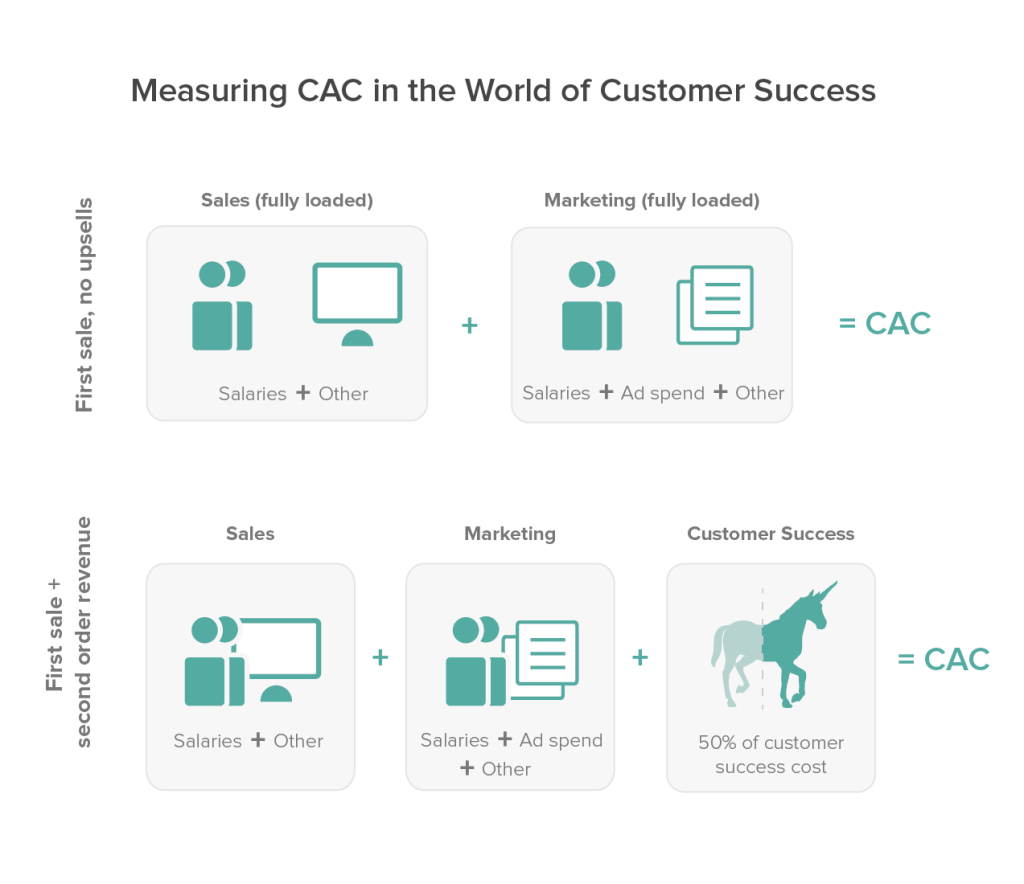One of the biggest changes impacting SaaS companies today is the rise of customer success as a strategic function within these organizations. Where the original SaaS companies relied on annual and multi-year contracts to lock in customers and reduce churn, today’s best SaaS companies have adopted the “land and expand” approach. This approach has a much lower monetary (and psychological) barrier to entry, and presents more opportunities to grow the account via upsells. While sales still owns the “land” part of this approach, the “retain” and “expand” pieces have been largely handed off to customer success.
Customer success is a team of unicorns that know how to provide top-notch customer support while also keeping an eye out for upsell opportunities. They’re as comfortable reacting to a customer complaint as they are proactively offering advice and engaging in account expansion calls. And it’s this ability to expand accounts that is having a significant impact on the evolution of the SaaS revenue model.
As the SaaS revenue model evolves, so are the metrics that SaaS companies use to monitor their growth. After all, if the metrics you’re using don’t reveal the most accurate picture of your business, what’s the point? The rise of customer success impacts all three of of the most important SaaS metrics:
- Churn: how many customers or revenue are you losing?
- Lifetime Value (LTV): what’s a customer worth?
- Customer Acquisition Cost (CAC): How much does it cost to acquire a customer?
Churn
Churn is a metric to help SaaS companies understand how good they are at keeping customers, but it’s not well understood. Most companies calculate churn as the Monthly Recurring Revenue (MRR) that cancels in any given month as a percent of the total MRR that they entered the month with. This is fine—it’s the classic way of measuring churn—but it’s not a one-size-fits-all metric.
This method of calculating churn becomes a problem for early-stage companies selling annual contracts. There are very real advantages to selling SaaS on an annual contract basis:
- It’s cash in the bank today
- Having a whole year to prove the value of a product is an advantage. We’ve repeatedly seen that total churn is lower among clients who sign an annual contract.
The downside is that the annual contract clouds what churn is meant to do: help SaaS companies understand how happy and engaged their customers are. Early-stage companies need this feedback loop to be as short as possible. In these cases, I prefer to use “discretionary churn”.
Discretionary churn is the amount of dollars churning in any month as a percent of total dollars eligible for churn. Think about it like this. In any given month you have a large percentage of your dollars that are tied into annual contracts, these contracts don’t have the opportunity to churn, even if they are unhappy/disengaged users of your product. You shouldn’t include this in your churn calculation because, realistically, you weren’t giving these customers a chance to get out of the product.
In this scenario, churn ends up looking very different. One example comes to mind of an early-stage SaaS company that quoted a churn rate of about 3% using the traditional method. This company used annual contracts and 60-70% of their deals were tied into annual contracts that didn’t have the opportunity to churn in any given month. When we looked at discretionary churn, this number was closer to 8%! The difference between the two is meaningfully relevant when calculating the lifetime value of a customer.

Discretionary churn turns this metric from a lagging indicator into a true barometer of how your customers perceive your product and service. Fix the product today, or expect a large number of customers to leave as soon as their contract is up. Once you’re at $5-$10 million Annual Recurring Revenue (ARR) you have to control that leaky bucket at the bottom or it will be a huge decelerator to your business.
Lifetime Value
LTV, for SaaS companies, can be calculated as average revenue per user (ARPU) divided by churn. We already talked about churn, the denominator in this equation. Now let’s look at the numerator.
If your SaaS business has upsells then your numerator is going to be heavily impacted by your customer success team. Traditionally, SaaS companies would measure ARPU as the contract value at signup. In a world where a large share of revenue was coming from annual contracts, this made sense. But that’s not the reality for many SaaS companies today. Today, monthly contracts and upsells are the norm, and measuring ARPU based on initial contract value doesn’t reflect reality.
For companies with freemium products, I often advise them to optimize for LTV as opposed to some other metrics like free to paid conversion. While the conversion from free to paid is inherently desirable, it is a necessary but not sufficient condition to a long term profitable SaaS business. For example, a company could have two tiers of paid products (or two different products) where one has a very high churn rate relative to the other. There are cases where the conversion from free to paid could be accelerated by sales strategies/promotions but the business would end up with paying customers with a much shorter LTV in the long term. Understanding how acquisition strategies at the top of the funnel affect LTV at the bottom of the funnel is critical to high-growth SaaS companies.
Customer Acquisition Cost
Of course, knowing what a customer is worth over the long-term is only step one. Knowing your LTV informs how much you can spend to acquire and service your customers — which brings us to CAC.
Because customer success is now playing a much larger role in generating revenue, it makes sense to include some of these costs in CAC. CAC, when used to calculate things like the LTV:CAC ratio, or the SaaS Magic Number, has typically been viewed as fully-loaded sales and marketing expense. But with a large portion of new recurring revenue coming from customer success, this needs updating.
If CAC is to reflect the true cost, we need to be honest with ourselves and say that a significant part of customer success’ job in the modern SaaS company is to acquire new revenue–via upsells, and via second-order revenue. Today I recommend that companies calculate CAC as fully-loaded sales and marketing plus 25-50% of customer success costs, depending on how responsibilities are split within the group.

Putting these metrics to work
These metrics will vary for your business and they will certainly continue to evolve. The important thing to remember is that a metric should never exist in a vacuum. It’s tempting to want to look at your data in the best light and share that rose-colored view with investors, but it’s not in the long-term interests of the company.
Choose your metrics with care, tailor them to your company, create something that is highly actionable and meaningful. This might mean that you end up with a disturbingly high churn rate, but you’ll also have far more insight on how to fix it. And in the end, those are the best metrics any SaaS company can have.
Good companies have thus far focused on perfecting the “software” part of Software as a Service, however, the next generation of great companies will pay as much, if not, more attention to the “service” implied in SaaS and the accompanying metrics that are leading indicators of success. These companies understand that when a customer signs up for your product, that’s the beginning, not the end, of the relationship.


 Tweet This
Tweet This